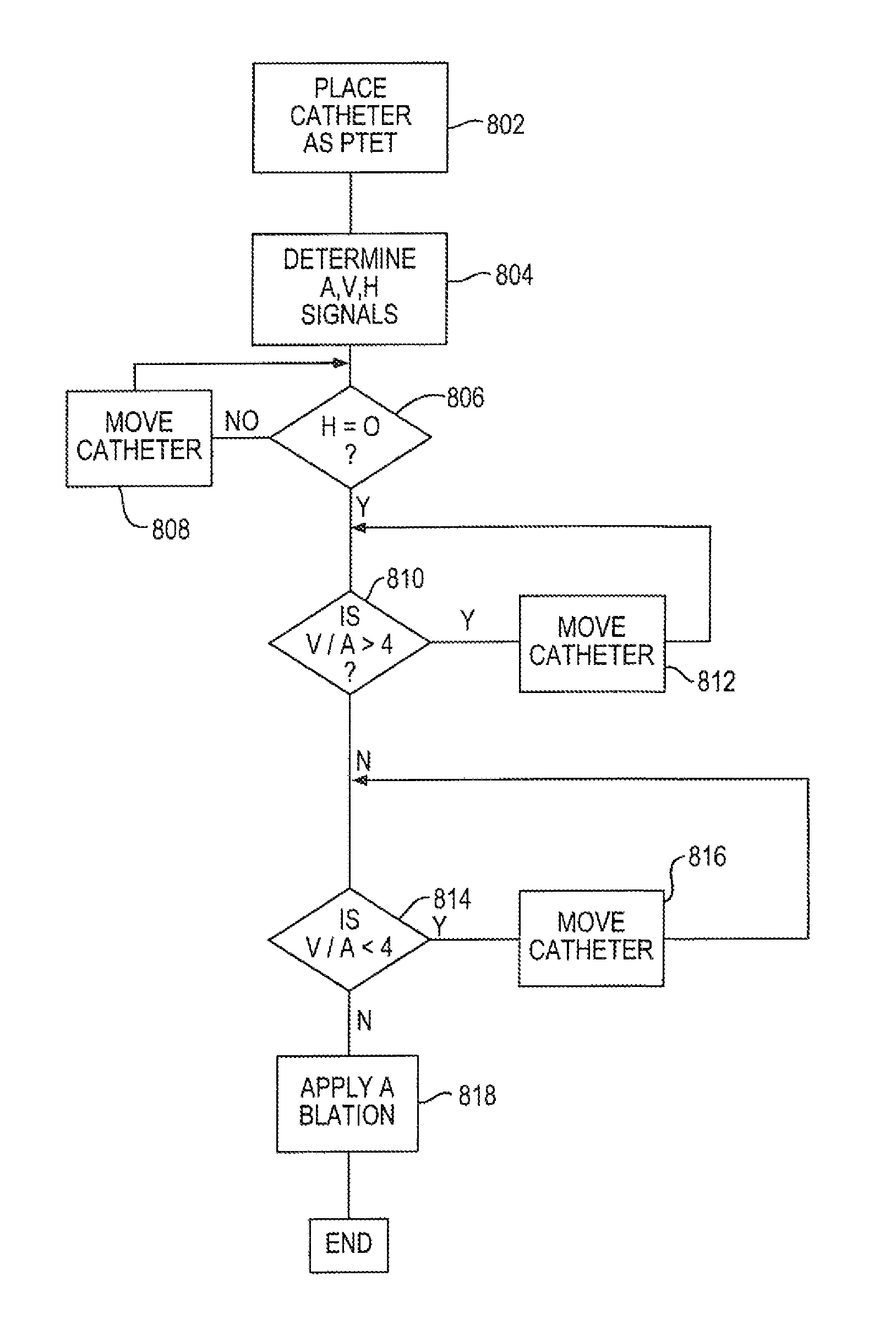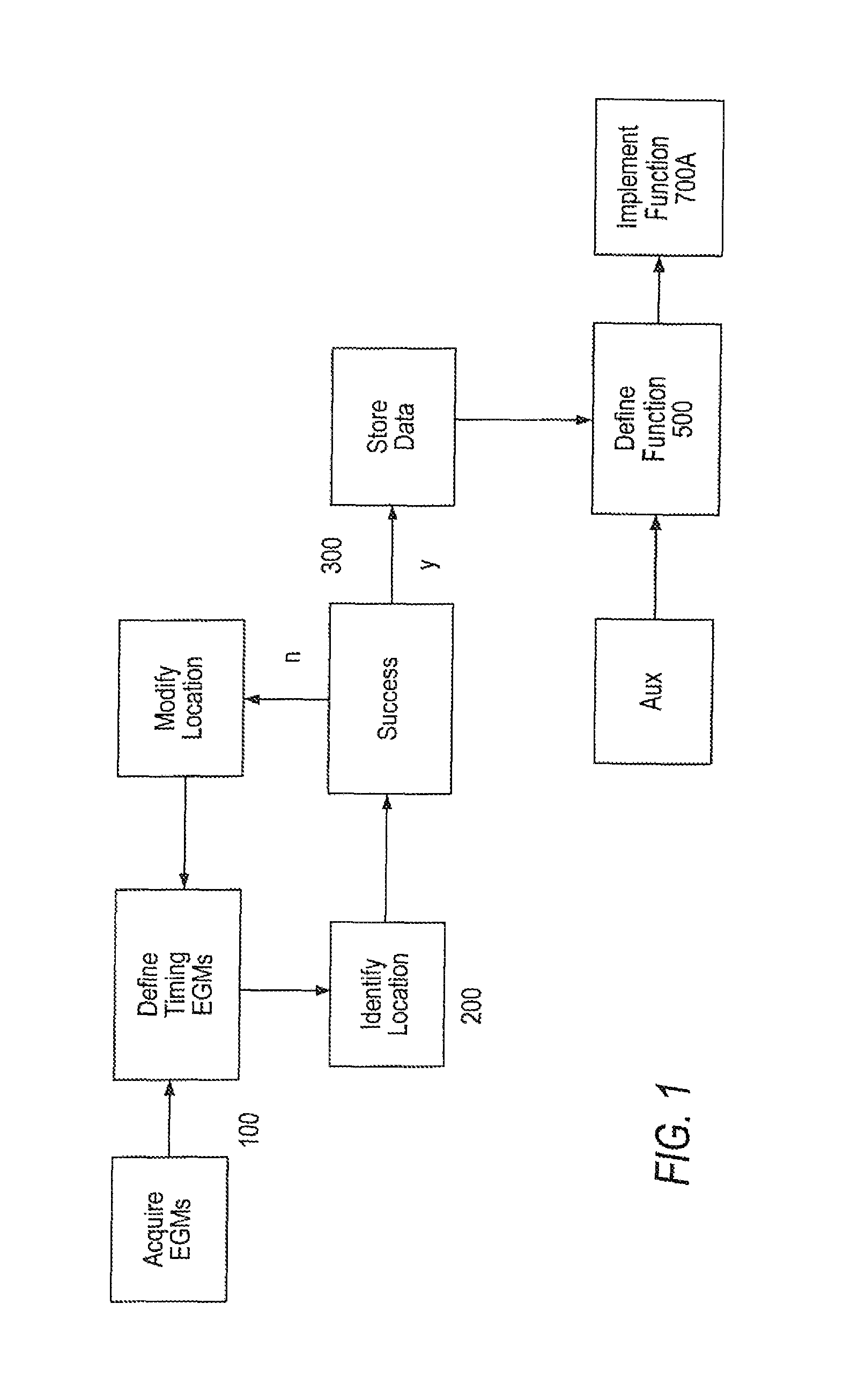Method for guiding an ablation catheter based on real time intracardiac electrical signals and apparatus for performing the method
a technology of intracardiac electrical signals and automatic guiding, applied in the field of automatic guiding of ablation catheters, can solve problems such as inefficient tailored approaches, and achieve the effect of low complications and high cure rates
- Summary
- Abstract
- Description
- Claims
- Application Information
AI Technical Summary
Benefits of technology
Problems solved by technology
Method used
Image
Examples
Embodiment Construction
[0020]As shown in FIG. 3, a typical ablation catheter 700 includes an elongate body with a distal aspect or end 702. The catheter body is composed of flexible material such as a thermoplastic polymer or similar material / composite with a central lumen (not shown). The catheter 700 includes several electrodes for mapping electrical activity in the heart as is commonly understood by those experienced in the art. The central lumen can house inner wires, catheters, deliver therapeutic agents or aspirate fluid such as blood.
[0021]Unfortunately, as conventionally designed catheters pass through a patient's tissues and vasculature the operator looses his or her ability to manipulate the catheter's exact location and position it proximate to the cardiac tissue being evaluated or treated due to the operator's forces at the insertion site, attenuation or frictional effects form bodily tissues and the compliant nature of the inserted catheters.
[0022]The current invention acquires intracardiac s...
PUM
 Login to View More
Login to View More Abstract
Description
Claims
Application Information
 Login to View More
Login to View More - R&D
- Intellectual Property
- Life Sciences
- Materials
- Tech Scout
- Unparalleled Data Quality
- Higher Quality Content
- 60% Fewer Hallucinations
Browse by: Latest US Patents, China's latest patents, Technical Efficacy Thesaurus, Application Domain, Technology Topic, Popular Technical Reports.
© 2025 PatSnap. All rights reserved.Legal|Privacy policy|Modern Slavery Act Transparency Statement|Sitemap|About US| Contact US: help@patsnap.com



